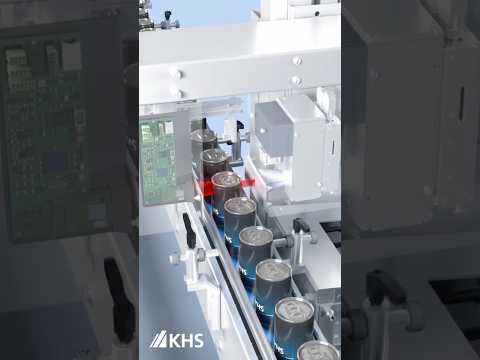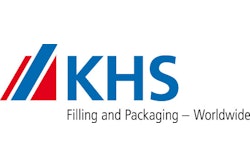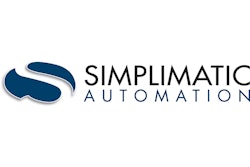The list of equipment on two new glass bottling lines at Anheuser-Busch's Houston, TX, brewery reads like a "Who's who" of packaging machinery suppliers. From depalletizers to fillers to palletizers, as well as conveyors and inspection systems, the world's largest brewer used its vast experience to select equipment that would meet its long-range production objectives.
Both lines use virtually the same equipment throughout. That's by design. To use A-B's parlance, the lines are "mirrored," something that's unusual for the brewer. "As a concept, it's a first for us, and it refers to buying the same equipment for both lines and setting the lines up identically in our plant," says Michael Harding, vice president, plant operations. The exceptions: Line 8, which produces 12-oz nonreturnable longnecks, uses a crowner. A capper is employed to cap 22- and 32-oz wide-mouth bottles on Line 7. There are also different handling parts used on the lines to accommodate the different bottle sizes.
A-B enjoys several advantages by using the same equipment up and down the line. Harding, who has since been promoted to corporate headquarters in St. Louis, was the Houston plant manager when the equipment was purchased and installed. He believes A-B gains buying leverage by purchasing more than one machine from each supplier. "It also gives us more control of the process in that it enables operators to more readily learn and maintain like machinery." He says that if necessary, machine parts can be swapped between the lines, as well.
Making it happen
Lines 7 and 8 were running by March. Combined, they produce nearly two million barrels of bottled beer annually. Line 8 produces one million barrels/yr while Line 7's output is between 800ꯠ and 900ꯠ barrels. A-B believes that the additional output capacity will help it accommodate demand in its Southwest U.S. market. Harding says solid sales growth is expected in this geographic area for the next several years, particularly for bottled beers.
"The beer market grew at about a one-percent pace this year overall. But in the region our Houston brewery services, sales have been brisk," explains Harding. He says the Houston plant produces beer for an area where sales are up more than 7% this year compared to last.
"The plant serves Texas, Louisiana, New Mexico, Arizona and Oklahoma, as well as some areas in Mexico," he says. "Our projections are that the area will continue to experience growth in the future. We want to make sure we gain our share of that market."
The Houston brewery is A-B's third-largest. It produces 10.2 million barrels/yr at the two-million sq' facility. At the time of Packaging World's visit, 64% of the plant's volume was packed in cans, 31% in bottles and the remaining 5% in kegs.
Much of the anticipated growth for A-B's Houston plant is expected to come from bottles. Before adding the two new lines, volume in bottles could not meet area demand.
"We had to bring in bottled beer from other Anheuser-Busch breweries," he says. "And the shipping costs ran into the hundreds of thousands of dollars. When we looked at sales forecasts we saw the need to build bottling capacity."
Justification
The additional output from the two new lines (Houston has a total of four bottling lines) results in the plant's production of nearly four million barrels of bottled beer annually. That volume will help the plant meet sales projections. Those forecasts of increased sales helped A-B justify the $50 million investment in the lines. Other key benefits include:
* Increased speed. Both lines can run 12-oz NR bottles at 1곁/min, though Line 7 fills wide-mouth bottles at 550 bpm. A 12-oz NR bottle line that reached 900/min was replaced.
* Reduced shipping costs. The additional output from the new lines relieves the need for the plant to have other A-B plants ship 12-oz bottles to meet market demand in Houston's sales territory.
* Fewer shifts. Faster, more productive equipment means more beer is packed in less time than was previously possible. That lowers labor costs and requires less energy.
* Less waste. Better control during the filling operation reduces beer loss while improved handling systems reduce bottle breakage.
By combining all these savings, A-B expects to pay back the investment in the two lines in five to six years.
Not surprisingly, the mirrored lines are the result of a large-scale team effort.
Harding credits William Bill, bottling manager, as well as Biz Ghose and Jeff Heitmann, project engineers, Gary McKinney, operations manager, Ray Mueller of central engineering, Steve Sherman, can group leader and Harvey Leuther, electrical lead, among the inner circle of personnel who developed the concept.
Perusing the process
The Houston plant receives amber glass bottles from Ball-Foster (Muncie, IN) and Owens-Brockway (Toledo, OH) in corrugated reshippers. Pallet loads of cases are moved by forklifts onto a conveyor. A Crown Simplimatic (Lynchburg, VA) machine depalletizes cases that are conveyed along a zero-pressure accumulating conveyor from Gebo (Bradenton, FL). This tabletop conveyor eliminates back pressure, allowing cases to accumulate without colliding on the line and possibly damaging the bottles inside. The cases are conveyed to an R.A. Jones (Cincinnati, OH) Model HSU uncaser that uses grippers to grab and remove the bottles from the tablock-style cases.
Empty cases are then conveyed to automatic case balancing systems that accumulate and store them, then deliver them on demand to downstream case packers as needed (see PW, April '98, p. 96). As the cases are moved to the balancing systems, an empty case inspector from Industrial Dynamics (Torrance, CA) inspects them for bottles, bottle fragments, and to make sure case flaps are open. Unsatisfactory cases are rejected for manual inspection and correction.
Meanwhile, empty bottles are conveyed from the Jones uncaser along a Gebo conveyor. "This conveyor has helped us eliminate bottle breakage and the related labor costs and downtime because it's a low-pressure system," notes Heitmann.
Bottles merge into a single lane on the Gebo, then proceed into the infeed worm and starwheel of a 144-nozzle Klockner KHS (Waukesha, WI) rotary rinser. Grippers grasp each bottle, rotating it 180°. Bottle exteriors and interiors are rinsed with filtered water. Water drains from the bottles before the rinser uprights bottles to feed a discharge starwheel.
Accurate filling
Bottles are conveyed into the infeed starwheel of a 144-valve Klockner KHS filler/crowner block system. Bottles are placed onto platforms where compressed air raises cylinders that elevate the bottles/platforms to the filling valves.
Air in the bottles is displaced by CO2 in a double-evacuation process that provides a nearly air-free bottle.
Filling commences as the liquid flows around a spreader and down the inside of the bottle, forcing gas back up the vent tube.
"We lost up to four percent of product on the older line, some of which came from this vent tube," says Harding. "When you fill, sometimes the addition of CO2 pushes beer out of this tube and that results in loss. With this new filler, our loss is less than two percent, which has helped us justify our investment."
When the beverage level covers the opening of the vent tube, a closing cam shuts off the flow of beer.
Next, the cylinders descend. As bottles contact a stationary, intermediate guide, they transfer into starwheel pockets that control bottles into the Klockner KHS crowner. Crowns are fed from a hopper down into a chute. As the crowner's turret rotates, each crown is placed in a platform.
A magnet holds the crown in place above a filled bottle. A cam lowers the crown and crimps it to the bottle. The crowner raises, and the bottle is picked off by a discharge starwheel.
Bottles are then conveyed into pasteurizing equipment, also from Klockner KHS. The stainless-steel pasteurizer has five zones. The model PII double-deck pasteurizer heats the beer to 140°F, then gradually lowers the temperature down to 68°F before discharging the bottles.
Handled with care
As the bottles are conveyed downstream, a Heuft (Downers Grove, IL) inspector monitors fill level, crown placement and checks for broken bottles, rejecting any bottle that's short-filled or has an improperly placed or missing crown. Bottles are conveyed to a Gebo low-pressure combiner where they're gently single-filed. Any fallen bottles are rejected from the line, but the conveyor/combiner works to alleviate that situation.
"On other lines, merge points like these pose problems," notes Bill. "The Gebo systems have helped us prevent a considerable amount of breakage on the new lines compared to what we've experienced with other lines."
Bottles continue into the labeling center that includes six Topmatic labelers from Krones (Franklin, WI). The line directs bottles to one of three labelers, each capable of operating at speeds of 650 bpm. So three units can handle the filler speed without causing bottles to accumulate upstream. Each of the three labelers applies both a body and neck label to each bottle.
Flowing downstream
Labeled bottles then continue to a Hartness (Greenville, SC) case packer. Bottles proceed through infeed and tabletop conveyors, and are collated prior to reaching a lowering grid. "Instead of a traditional drop packer where the case comes up, meets the grid and bottles are released through the grid," explains Bill, "here the box comes to the drop area and the grid lowers the bottles into the box before releasing them. It's a forgiving design that reduces the force at which the bottles contact the box."
Filled reshippers are conveyed to a Standard-Knapp (Portland, OR) Model 180 tablock slitter/sealer that slits the tabs holding down the flaps, folds the flaps and glues them shut, using compression to complete the case. Just before cases are sealed on the slitter/sealer, another Industrial Dynamics inspector "looks" through the 24-count case, checking for missing or broken bottles, as well as open flaps. Unsatisfactory cases are rejected for manual reworking.
Next, a Marsh (Belleville, IL) large-character ink-jet coder applies a one-line code that includes not only the freshness date that appears on the bottle label, but also the line designation and hour. Another Gebo conveyor transports cases to a different area in the building where they're automatically palletized, stretch-wrapped (see sidebar, p. 24) and warehoused. The Houston plant distributes to customers in its territory by truck and rail.
A-B's decisions for all the equipment on the lines involved considerable evaluation. The Klockner KHS filler, for example, "was one of the only ones to offer a rotary rinser at the time of our decision, which was critical for us because in-line rinsers would have been difficult to fit into our space."
Bill tells PW that 90 people were trained on the new equipment, and that the lines were among "the most successful start-ups we've ever done."










































